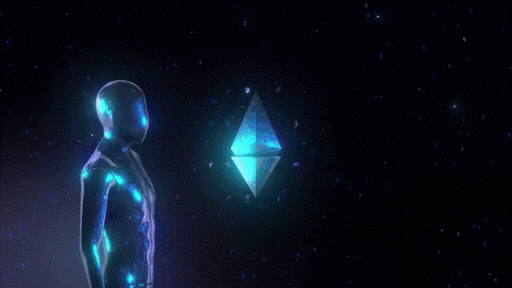What is the Metaverse?
The Metaverse is a virtual or simulated world that is accessible through avatars, artificial intelligence, and micropayments. It is also referred to as the real internet. The most popular form of the Metaverse exists on Second Life but more recently, huge corporations such as Facebook and Google have developed their own prototypes for virtual reality platforms that are similar to the Metaverse.
Different projections of the future have different names for our virtual reality, but there is one name for it that appears to never change: Metaverse. This name comes from the Latin word ” Munitus”, which means “force or protection formed of a network.”
The future is here, and it comes with a new name. The metaverse stands for the “worlds that are brought about by virtual reality and augmented reality” to those who have never heard of its predecessor: the Virtual World of Massively Multi-User Online Role-Playing Games. It’s a name that comes with plenty of old stories and sci-fi movies, but in recent years has taken on a more optimistic tone as something to be excited about.
How does it compare to today’s virtual worlds?
The metaverse is somewhat different from today’s Virtual Reality. It was first showcased by author Neal Stephenson in his novel Snow Crash, multiple times during the latter half of the novel. The Metaverse is almost a mix of real world and virtual reality, but it does not involve VR equipment like a helmet or goggles, which makes it more possibly realistic and accessible to a larger number of people.
The Metaverse is a term that refers to the merging of reality and virtual worlds. This merging means that a single person can be simultaneously in two different places, for example, somebody might be at home and also in the Metaverse. This virtual world shows them people around the world on a single screen. The time for the Metaverse comes when these worlds and this world merge seamlessly to where someone will never know whether they are in reality or virtual space.
We can see what all these new technologies are capable of from the creations currently in development. There’s no denying that virtual reality is an important, growing part of our culture, as seen by its presence at events like the Consumer Electronics show and conventions like Comic Con. And, while we may understand how it works, there’s still plenty of confusion around what technologies it truly requires to function.
Visible versus Invisible classes
Many characters in literature are divided into two basic classes, the visible and the invisible. The visible takes risks and rewards in order to accomplish their goals, while the invisible wakes up every morning looking for a way to remain concealed. What makes these classes so distinct is they are entirely different people, with different motivations and personalities.
It first began when billionaire and engineer Oculus Rift developed their VR headset. Utilizing the immersive technology, players can explore different video games without actually stepping outside of their homes. After the development of this tech, other electronic engineers are developing new things such as a wearable device to provide human computation power in a way that’s very similar to how it works in the back of your brain or a portable programming language called Machine Learning.
Hierarchies are specifically important to an MMORPG because that way you can tell who is, and who is not, also playing the game. We know different people want different changes at different levels of gameplay and it definitely doesn’t help when there’s no way to tell which players are in class one and which players are in class three.
Hence, having invisible classes to allow for a less restrictive progression system for other undisclosed quests without making the experience more difficult for the unprepared player allows for more fluid gameplay.
The social group known as
Immortals are people who have committed themselves to becoming among the first individuals on earth to have their brains implanted with a computer chip which is controlled by neuroscience (a set of technologies that measure and control brain function through signals carried electrically or optically through the skull).
The implant would replace the organic synapses in their brain. Immortals are expected to look, feel and think like humans but without any physiological vulnerabilities such as mutations, diseases, aging or death. They can also be considered software entities that got uploaded into virtual worlds that exist solely within this physical world. They are interested in being a part of the next major evolution in human evolution. Known as VirtualeD,
they seek out and give ideas to create positive change for the future.
The group began as a small social group with about 300 Facebook followers, but it quickly grew to a large number of members who are leading the changes that society desires for this new era. They have been able to land amazing interviews and have a clear connection with many big names in science, technology, and business because they aim to make innovative ideas work.
Change and evolution of metaverse over time and its significance
2017 will be the year that’ll make or break the whole future of virtual worlds, it’s a time when change is imperative so we must understand what normality is and what kind of changes this creates. The metaverse first begun a little over 50 years ago with author Michael A Bradbury’s story “Sideways in Time”, he suggested character Kay’s father had died and she was put into a virtual world. Almost 2 decades after its release, Nolan Bushnell founded the company “DEJAVU” which released his first computer game called “Reality”.
The metaverse has been called many things: ‘virtual reality’ and ‘the Internet,’ among other definitions. The term is often used interchangeably with “cyberspace” and more recently, the “shared imagination,” though the exact definition has not been agreed upon. What is clear, however, is that the leading experts have different views on what horizon it represents.
The Metaverse is a platform where people can explore virtual worlds using cool headsets and advanced technology. In this perspective, the term “Metaverse” refers to a digital world and its information and not an actual place. The word Metaverse has been used since the Cyberpunk genre (such as 2020: What Makes Cyberpunk Dystopia So Bad?).
What you should be cautious about in a metaverse environment
One thing to be cautious about in a metaverse is being forced into doing something you don’t want to do. This is because it reduces the freedom of choices for people who are willing and able to only choose publicly disclosed actions in such an environment. This can happen anywhere that you cannot fully control your information, but you should keep that in mind when making the decision to use any platform or application associated with a metaverse.
A metaverse environment is a 3-dimensional digital landscape that lets people create, explore, consume and share content. It consists of digital 3D models, real life activities such as shopping and working, dense pockets of social interaction via virtual worlds, augmented reality and the matrix. The level of immersion in a metaverse can be manipulated by the user’s state of mind or conscious choices. A metaverse can also have its own economy and they give us new ways to communicate with people across distances.
You should be cautious of any place you find in the metaverse that is exclusively for you to visit. The reason is that with access to many people, there is also a chance of your account being taken over by another user. With this, your personal information could be hacked and used against you.
Conclusion
The Metaverse show has concluded, but there are still many questions left to be answered as the technology of virtual reality is only just beginning. What do you think about this made up version of the future?
Hopefully, those of you who have already experienced a first-hand transition into VR have thought about the future potential of this technology. The Metaverse is not all virtual reality and computer games.
A metaverse is a 3D collaborative imagined space that can be accessed anywhere and at any time; it facilitates interactions with people who are physically together in the same physical space (IE, Facebook’s chat room).
When developed correctly, the experience is far better than anything we can currently feel. As long as there are no issues with latency or creative expression, seamless communication won’t ever be an issue on some level.

